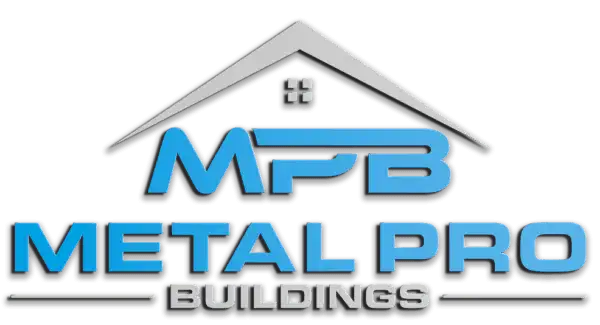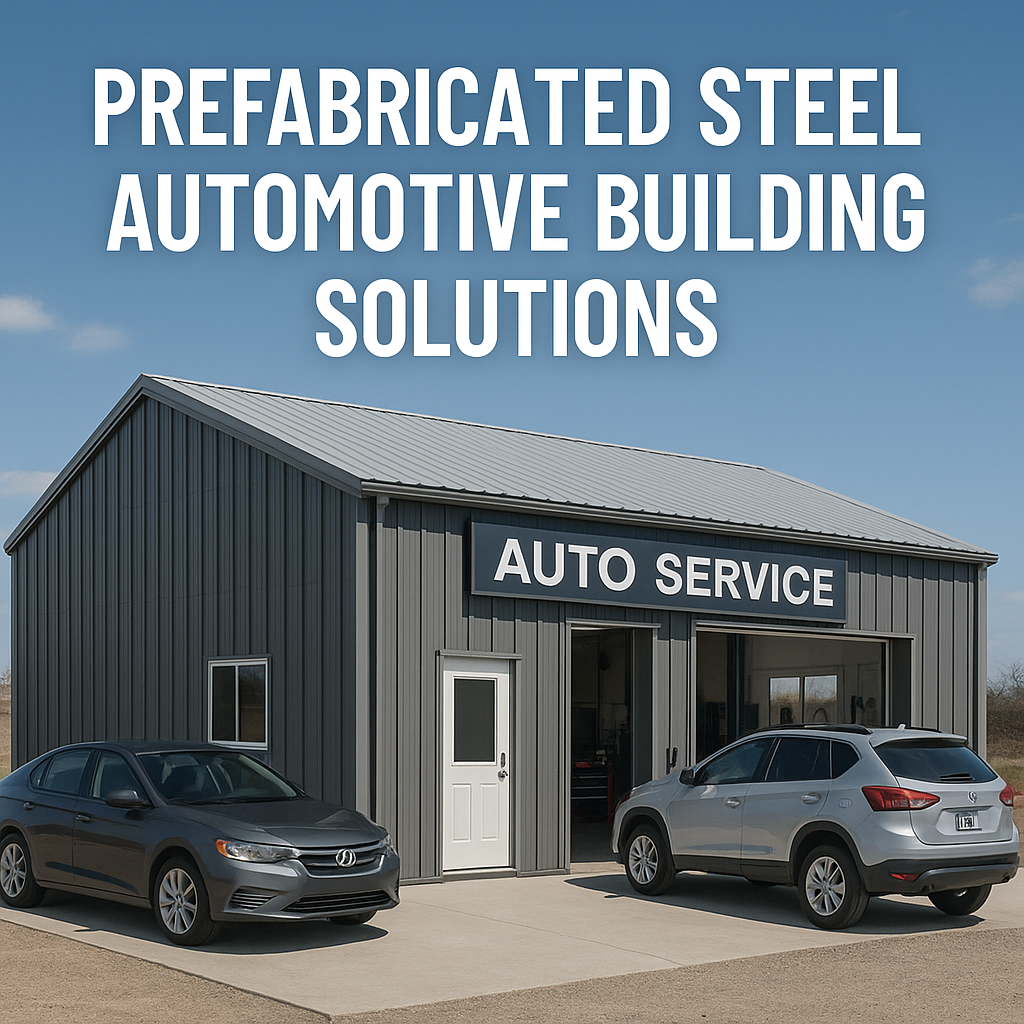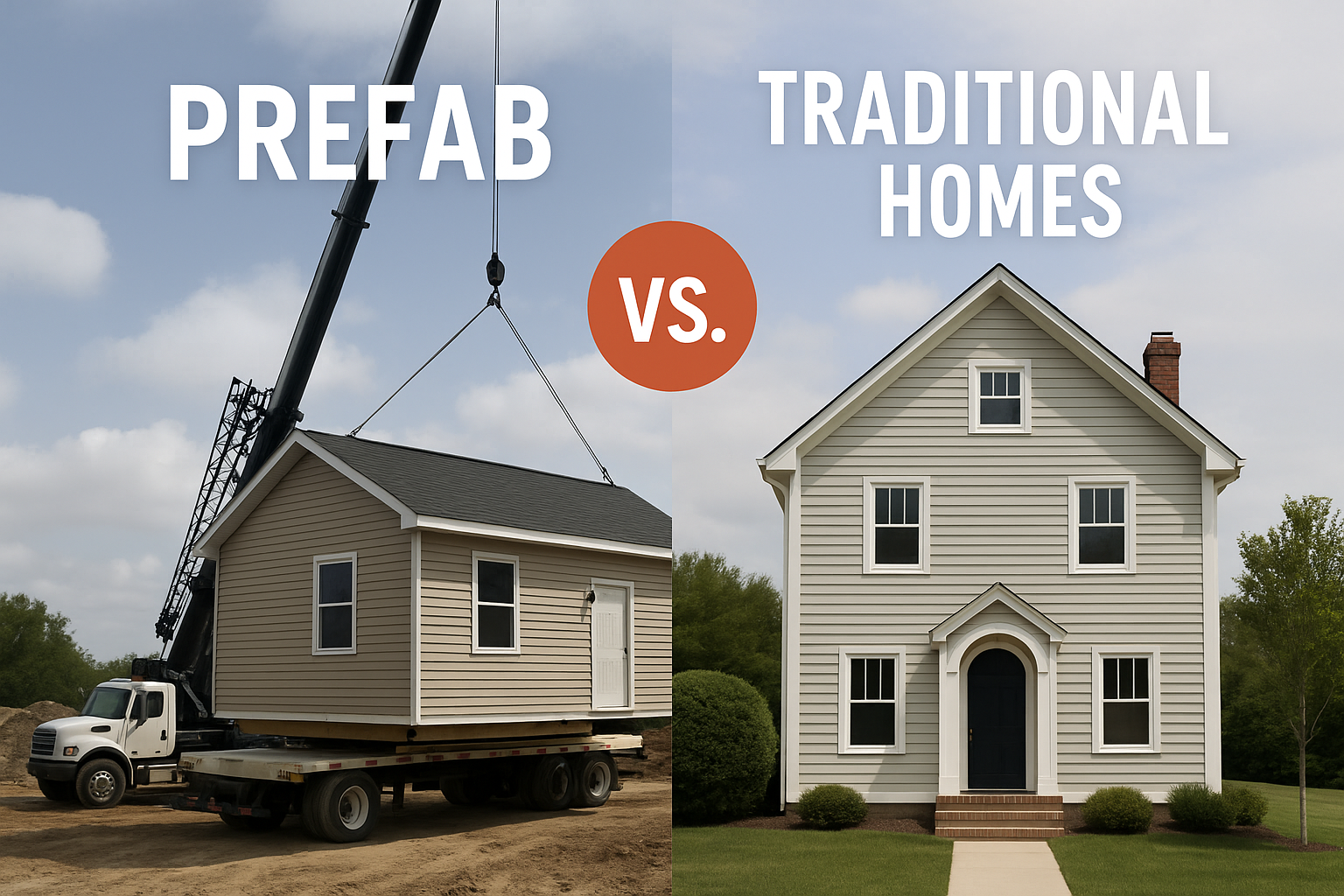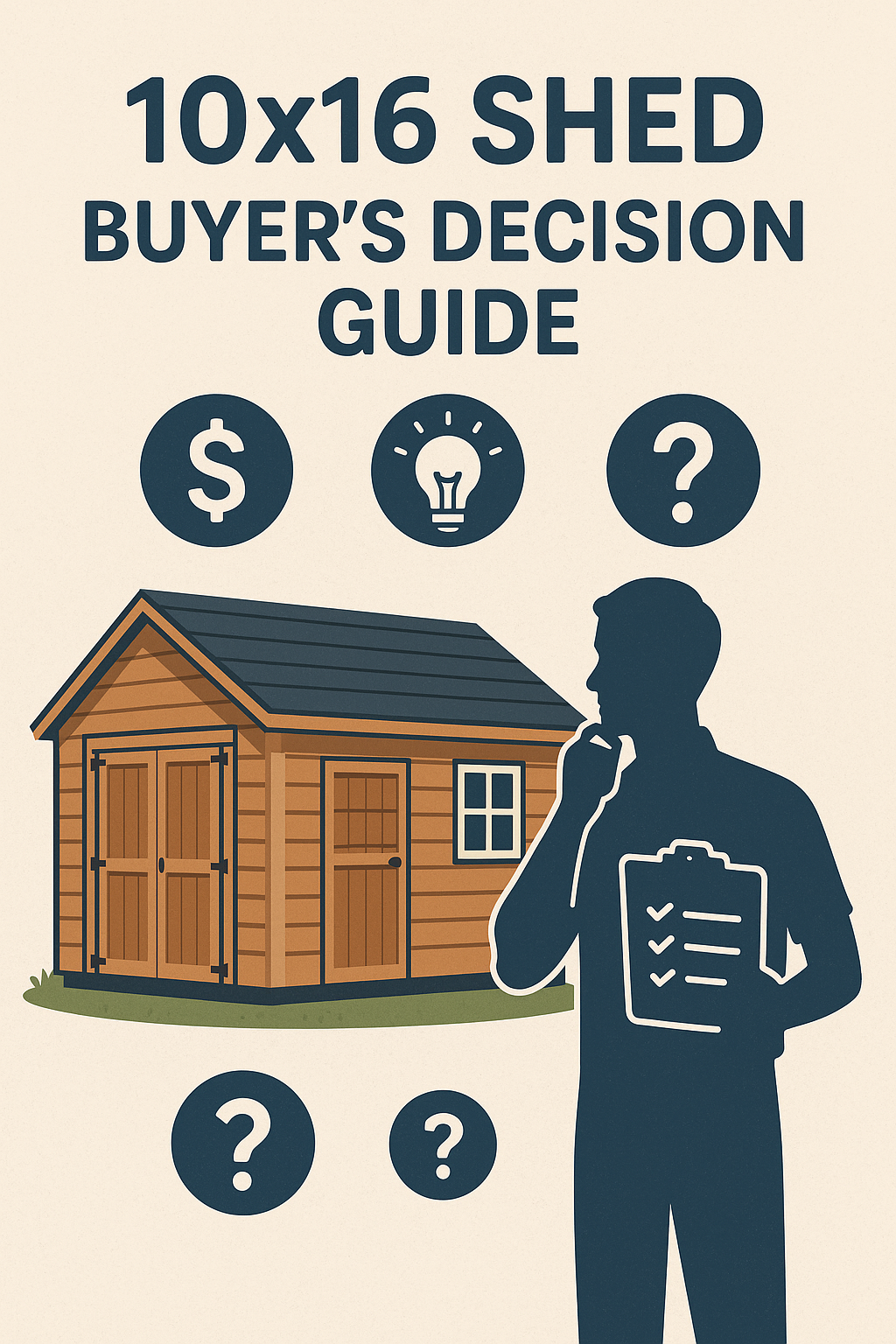Building a barn is a big decision especially in Canada, where weather can be extreme and your structure needs to stand the test of time. One of the first choices you’ll face is whether to go with metal or wood. Both have their strengths, but which one is truly right for you?
In this article, we’ll break down the key differences in cost, durability, maintenance, and climate performance to help you make the best choice for your land and your goals.
What Are Metal Barns?
Metal barns, commonly referred to as steel barns, are structures primarily constructed from steel components. These barns have gained popularity in Canada and other regions due to their durability, low maintenance requirements, and adaptability to various uses.
Materials and Construction
Metal barns are typically made from galvanized steel, known for its resistance to corrosion and harsh weather conditions. The construction involves prefabricated steel frames, walls, and roofing systems, which are manufactured off-site and assembled on location. This prefabrication ensures precision, reduces construction time, and minimizes on-site labor costs .
Structural Features
Key features of metal barns include:
- Clear-Span Design: Allows for unobstructed interior space, facilitating easy movement and storage .
- Customizable Layouts: Options for adding doors, windows, insulation, and ventilation systems.
- Energy Efficiency: Potential for incorporating insulation to maintain internal temperatures, reducing heating and cooling costs .
- Low Maintenance: Resistance to pests, fire, and rot, leading to reduced upkeep over time .
Availability in Canada
At Metal Pro™ Buildings, we proudly serve customers across Canada with durable, pre-engineered steel barn kits designed to withstand the country’s toughest weather conditions. Whether you’re building in Ontario, the Prairies, or the Maritimes, our structures are engineered to meet all local building codes and climate requirements from heavy snow loads to extreme cold.
Our metal barn kits are easy to assemble, with clear instructions and expert support available every step of the way. Whether you’re a DIY builder or prefer professional installation, we make the process smooth, fast, and stress-free.
Need a custom layout? Want to explore energy-efficient add-ons or plan for future expansion? We’ve got you covered.
Ready to start your barn project? Get a free quote today.
What Are Wooden Barns?
Wooden barns have long been a staple in Canadian landscapes, reflecting a blend of tradition, functionality, and aesthetic appeal. These structures, often constructed using timber framing techniques, are renowned for their versatility and timeless charm.
Materials and Construction
Traditional wooden barns are primarily built using timber frames, a method that involves crafting structures from heavy timber joined together with pegged mortise and tenon joints. This technique not only provides structural integrity but also offers a rustic aesthetic that many find appealing. In Canada, species like pine and hemlock are commonly used due to their availability and workability .
Modern adaptations have introduced engineered wood products, such as glued laminated timber (glulam), which allow for longer spans and greater design flexibility while maintaining the warmth and character of natural wood .
Availability in Canada
In Canada, wooden barn kits are available through various suppliers, offering both pre-designed and customizable options. These kits cater to different needs, from simple storage barns to elaborate event spaces. Companies provide materials and plans that comply with local building codes, ensuring structures are suited to Canada’s diverse climates .
How Much Do Metal Barns and Wooden Barns Really Cost in Canada?
When deciding between a metal and a wooden barn, understanding the cost implications is crucial. Here’s a breakdown to help you make an informed choice.
Initial Construction Costs
Metal Barns: the cost to build a metal barn in Canada ranges from $15 to $40 per square foot for prefabricated kits. If you opt for a turnkey solution, including installation, prices can range from $24 to $43 per square foot, depending on factors like size, design complexity, and location.
Wooden Barns: Building a wooden barn is generally more expensive. Costs vary based on the type of construction:
- Standard Wood Barns: Approximately $20 to $100 per square foot, influenced by materials and labor.
- Timber Frame Barns: These custom-built structures can cost between $50 to $100 per square foot.
Long-Term Maintenance and Repair Expenses
- Metal Barns: Metal barns are known for their durability and low maintenance. They resist pests, mold, and fire, leading to reduced upkeep costs over time.
- Wooden Barns: Wooden barns require more maintenance due to susceptibility to rot, pests, and weather-related damage. Regular inspections, treatments, and repairs are necessary, which can add to long-term expenses.
DIY vs. Professional Installation
- Metal Barns: Prefabricated metal barn kits are designed for ease of assembly, making them suitable for DIY projects. This can significantly reduce labor costs.
- Wooden Barns: Constructing a wooden barn, especially timber-framed ones, often necessitates skilled labor due to the complexity of the design and construction methods. This can increase both time and labor expenses.
Durability and Maintenance
When investing in a barn, understanding its longevity and upkeep requirements is crucial. Here’s an updated comparison :
Metal Barns
- Durability: Metal barns, especially those constructed with galvanized steel, are renowned for their resilience. They withstand severe weather conditions, resist pests, and don’t rot or warp. This makes them ideal for Canada’s diverse climates, from the snowy regions of the north to the humid areas in the south.
- Maintenance: These structures require minimal upkeep. Routine inspections for rust or corrosion, especially in areas with high humidity or salt exposure, are advisable. However, overall maintenance costs are relatively low compared to wooden structures.
Wooden Barns
- Durability: Wooden barns offer a traditional aesthetic but are more susceptible to environmental challenges. They can be prone to rot, insect infestations, and fire hazards. In regions with significant snowfall or moisture, additional structural support and protective treatments are often necessary.
- Maintenance: Regular maintenance is essential to preserve the integrity of wooden barns. This includes periodic sealing or painting, replacing damaged or rotting components, and ensuring proper ventilation to prevent moisture buildup. Over time, these maintenance tasks can accumulate, both in effort and cost.
Which Barn Is Easier to Build and Customize in Canada?
When it comes to building a barn, time and flexibility matter especially with Canada’s short construction season and unpredictable weather. Whether you’re racing winter or planning for livestock or storage, knowing what to expect can make or break your project timeline.
Metal Barns: Fast, Efficient, and Flexible
Steel barns are known for their quick build times. At Metal Pro™ Buildings, our pre-engineered kits arrive ready to assemble with all components precisely cut, drilled, and labeled. With a small team or contractor, you can go from delivery to standing structure in a matter of days.
And speed doesn’t mean one-size-fits-all. Metal barns can be customized to your specs including door sizes, ventilation, insulation, roof style, and even future expansions. They’re also easier to modify later if your needs change.
Wooden Barns: Hands-On Craftsmanship, Longer Builds
Wooden barns, especially post-and-beam or timber frame types often require longer build times and more hands-on labor. From sourcing and treating wood to skilled joinery and finishing, building a traditional wooden barn can stretch from weeks into months, particularly in remote areas.
While they offer rich design potential and rustic charm, customizing a wood barn takes time and often comes at a higher price tag. This can be a great option if aesthetics are your top priority but less ideal if you’re on a tight schedule or budget.
Need a barn that’s quick to build and easy to customize?
Metal Pro™ Buildings offers prefabricated steel barn kits that are built to your specs and ready for Canadian conditions. Start your project with a free quote today.
Which Barn Handles Canadian Weather Better?
Canadian winters are no joke. Between deep freezes, heavy snowfalls, and spring thaws, the barn you choose has to be more than functional; it needs to withstand the elements. Here’s how metal and wooden barns stack up in real Canadian conditions.
Metal Barns: Made for Tough Weather
Handles Snow with Ease
Metal barns can be engineered for specific snow load ratings crucial for areas like Northern Ontario, Alberta, and Quebec, where accumulations can strain weaker structures. With pre-engineered steel, you get peace of mind that your roof won’t buckle under pressure.
Resistant to Moisture and Mold
Unlike wood, steel doesn’t absorb water. That means no warping, rotting, or swelling during rainy seasons or spring melts. It’s also inhospitable to mold and pests a big win for barn owners storing hay, tools, or feed.
Performs in Extreme Cold
Modern metal barn kits can be easily insulated to stay warm in -30°C or cooler. Combined with energy-efficient windows and proper ventilation, steel barns maintain comfort for livestock and protect valuable equipment year-round.
Wooden Barns: Traditional, But Vulnerable
Challenged by Moisture and Insects
Wood absorbs moisture, which can lead to rot, swelling, and structural weakening. In wetter regions like the Maritimes or southern B.C., this can shorten the barn’s life unless maintenance is meticulous.
Requires More Winter Prep
Wood barns do insulate naturally, but they’re often more draft-prone unless sealed carefully. Insulation upgrades can help, but that adds cost and even then, wood tends to shift more with temperature changes, causing wear over time.
At Risk for Snow Load
Wooden structures, especially older-style designs, may require additional reinforcement or frequent snow removal. Without it, the roof integrity can degrade over time.
Which Barn Is Right for You?
Choosing the right barn depends on your purpose, budget, maintenance expectations, and even your local climate. Here’s a simple breakdown to help you compare metal and wooden barns at a glance:
| Feature | Metal Barn | Wooden Barn |
|---|---|---|
| Durability | Highly durable; resists pests, rot, fire, and weather | Prone to rot, pests, fire; needs more care |
| Maintenance | Very low; occasional inspection for rust | High; requires sealing, painting, pest control |
| Construction Time | Fast (prefab kits can be built in days) | Slower; more labor-intensive and weather-dependent |
| Customization | High with prefab kits and modular options | High, but more expensive and time-consuming |
| Insulation | Insulation optional; added if needed | Naturally insulating; extra insulation optional |
| Aesthetic Appeal | Modern, clean look with many design choices | Traditional, rustic appearance; great for visual charm |
| Environmental Impact | Recyclable steel; long lifespan, low waste | Renewable resource; higher maintenance increases footprint |
| Upfront Cost | Lower to mid-range, depending on size and features | Mid to high-range, especially for timber-framed barns |
| Ideal Use-Cases | Farming, equipment storage, garages, commercial uses | Event barns, rustic farm settings, heritage-style buildings |
Conclusion
Both metal and wooden barns have their benefits, but for most Canadian property owners, a metal barn offers greater durability, lower maintenance, and faster construction. If you need a cost-effective, weather-resistant structure that’s built to last, steel is a smart choice. At Metal Pro Buildings, we make it easy to design and build the perfect barn for your needs. Get your free quote today.






